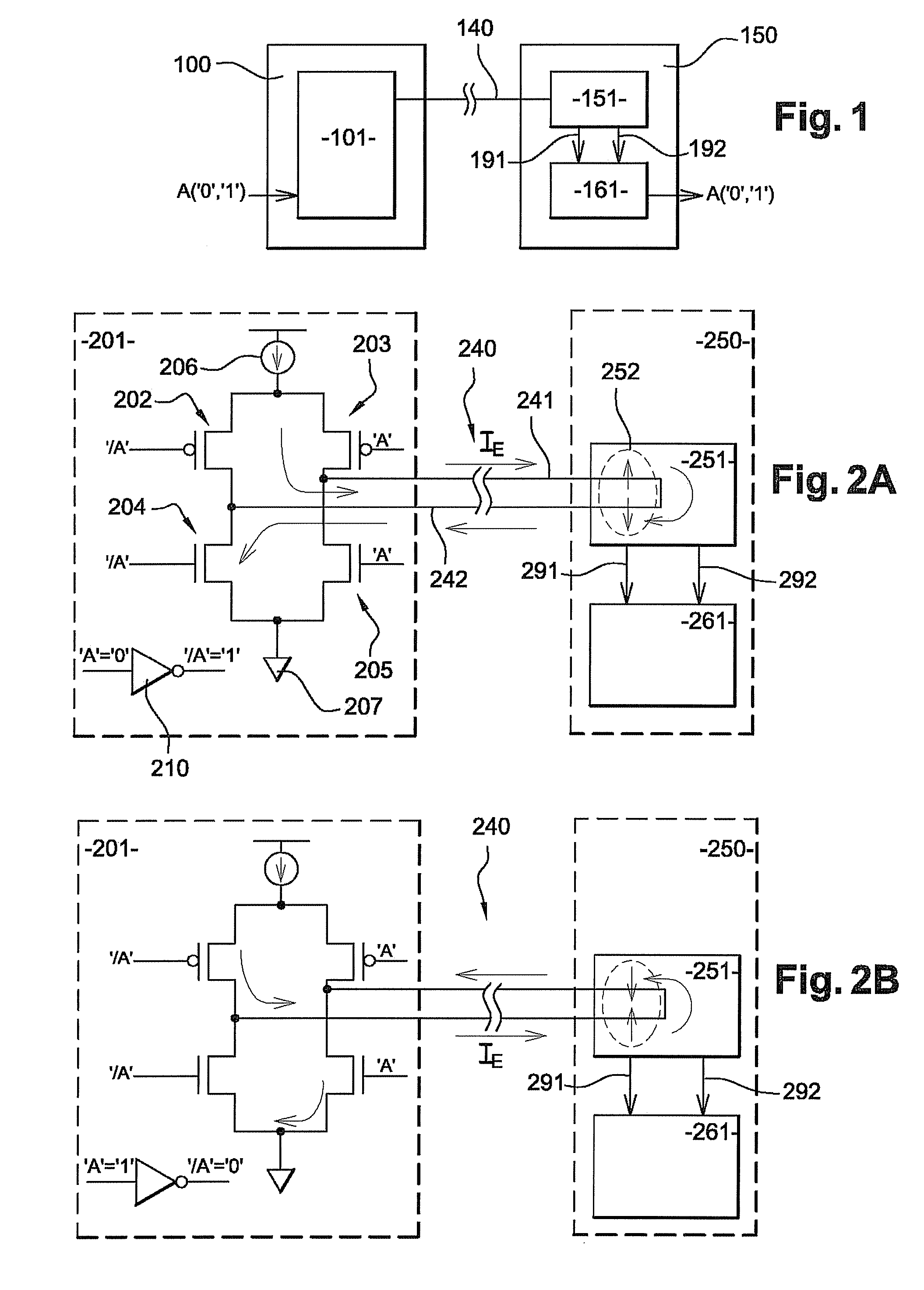Electronic device for the transport of numerical information
a numerical information and electronic device technology, applied in the direction of transmission, logic circuits, transmission lines, etc., can solve the problems of mw and at greater cost, inability to operate below a differential voltage swing of 700 mw, and markedly higher power consumption, so as to increase the bit transmission rate and reduce the resistance area , the effect of high magnetoresistan
- Summary
- Abstract
- Description
- Claims
- Application Information
AI Technical Summary
Benefits of technology
Problems solved by technology
Method used
Image
Examples
Embodiment Construction
[0080]FIG. 1 shows the units which make up an electronic device in accordance with the invention. A transmitter 100 comprising an integrated circuit 101 is designed to write to the first stage 151 of a receiver 150 via a write loop 140. The term “write” actually denotes the output of electrical signals by current modulation from integrated write circuit 101 to the first stage 151 of receiver 150. Receiver 150 also comprises an integrated read circuit 152 which is electrically connected to first stage 151 via connections 191 and 192.
[0081]The length of write loop or line 140 represents the distance over which the “0” and “1” digital signals are transported. Obviously, the digital information (signals) reach integrated write circuit 101 from a source situated upstream and shown schematically in FIG. 1. Similarly, integrated read circuit 152 of receiver 150 transmits digital information originating from magnetoresistive stage 151 which it has decoded to one or more other components cap...
PUM
 Login to View More
Login to View More Abstract
Description
Claims
Application Information
 Login to View More
Login to View More - R&D
- Intellectual Property
- Life Sciences
- Materials
- Tech Scout
- Unparalleled Data Quality
- Higher Quality Content
- 60% Fewer Hallucinations
Browse by: Latest US Patents, China's latest patents, Technical Efficacy Thesaurus, Application Domain, Technology Topic, Popular Technical Reports.
© 2025 PatSnap. All rights reserved.Legal|Privacy policy|Modern Slavery Act Transparency Statement|Sitemap|About US| Contact US: help@patsnap.com



